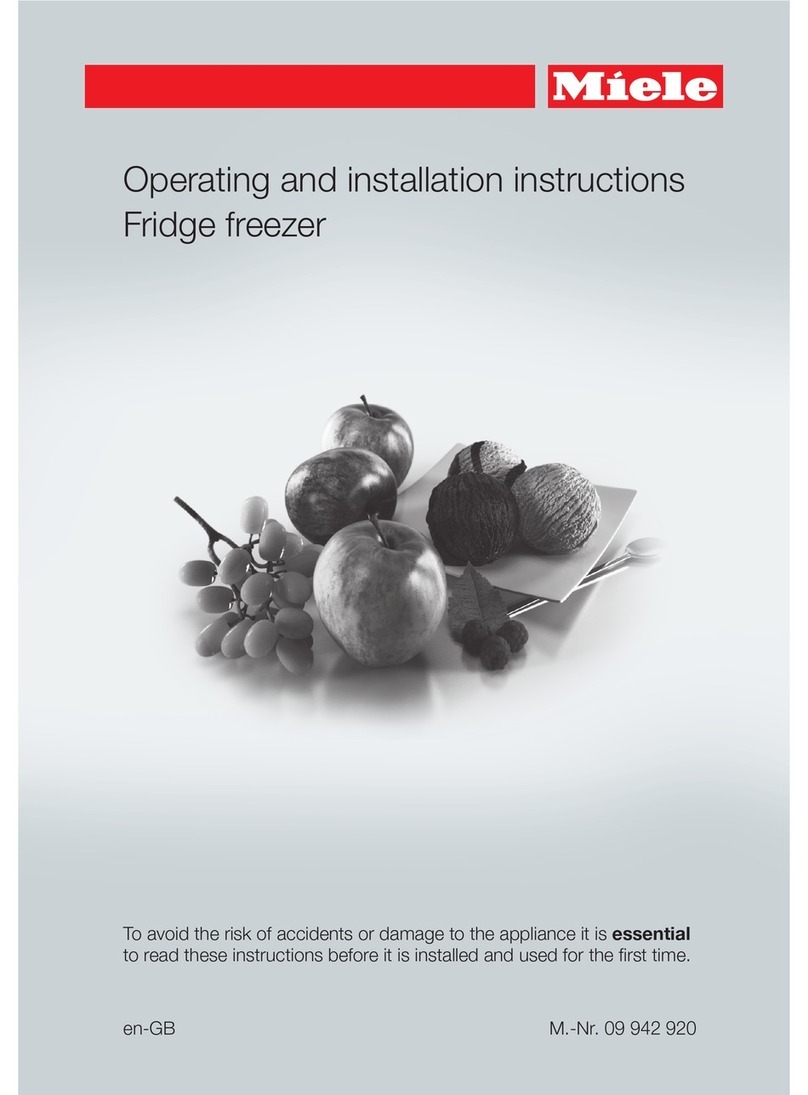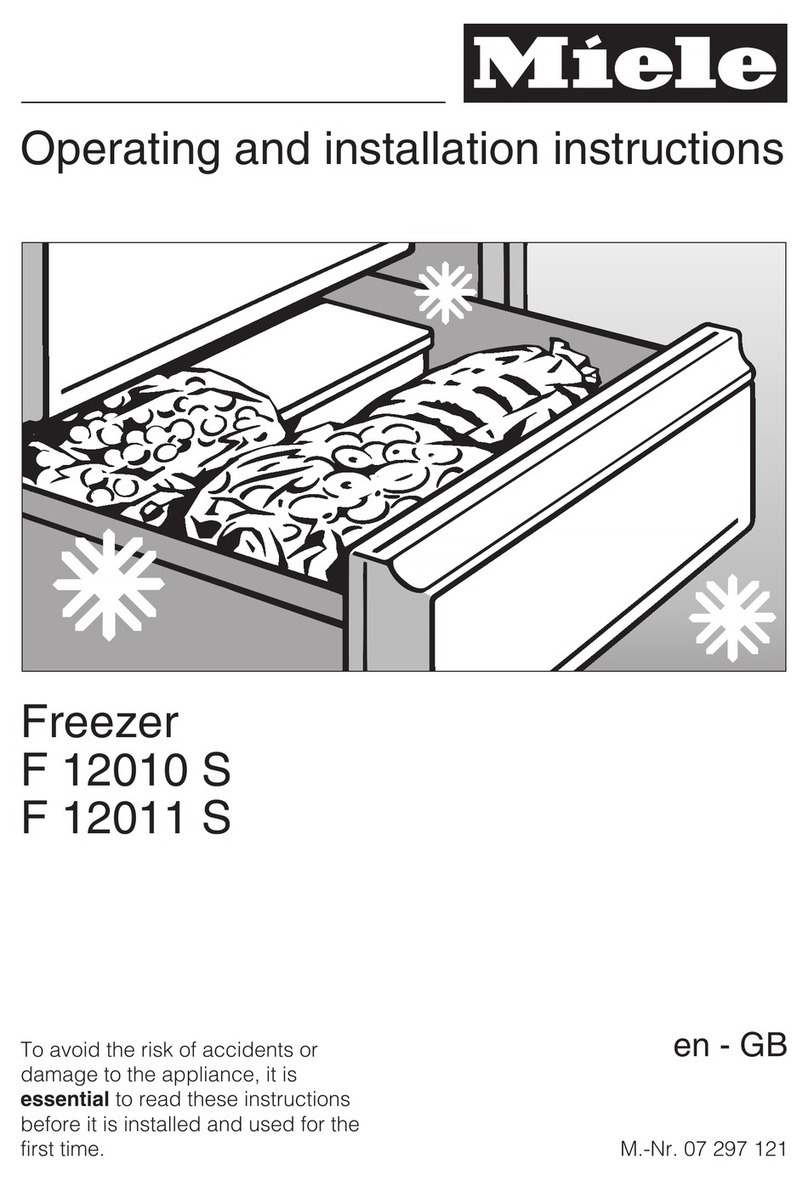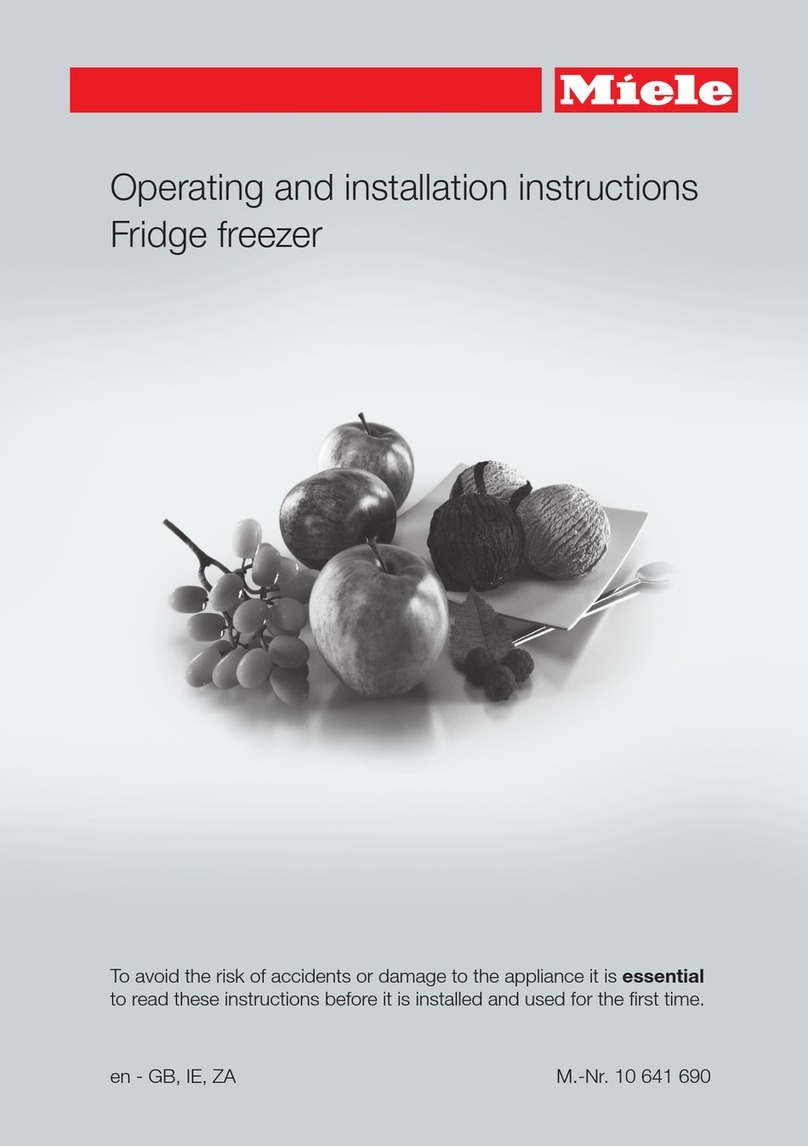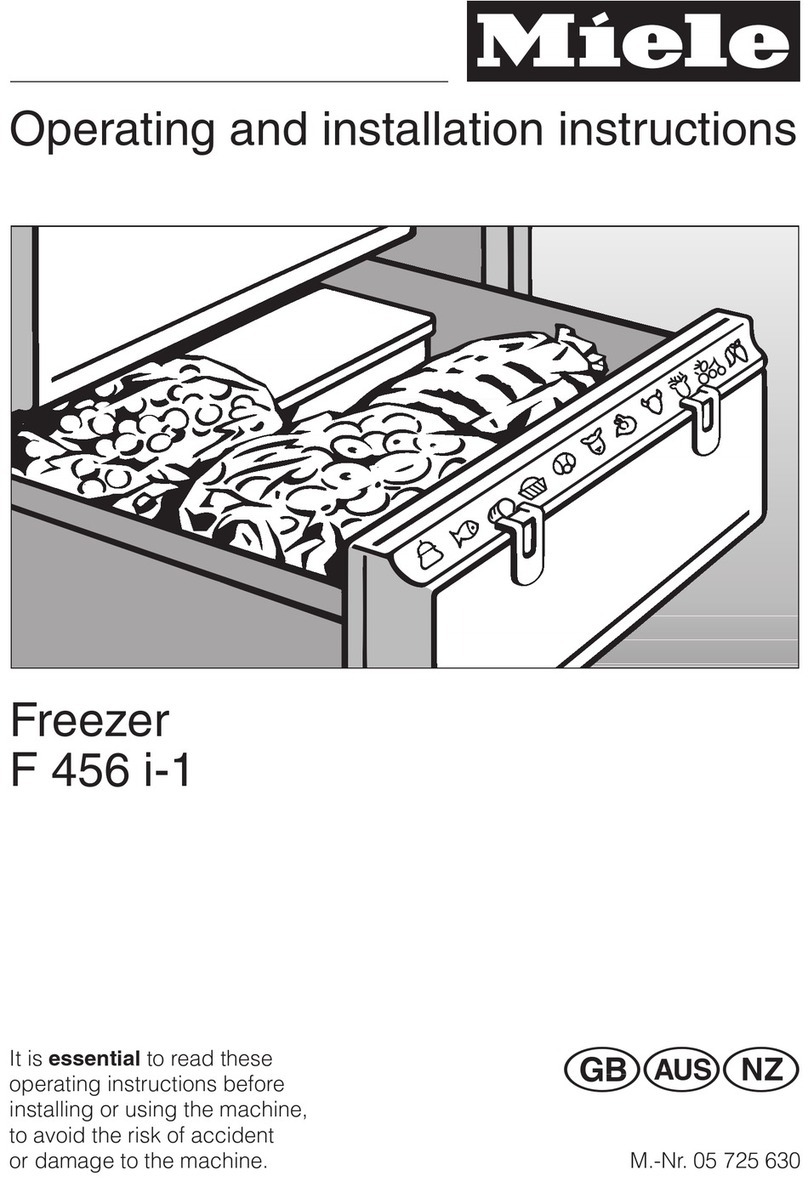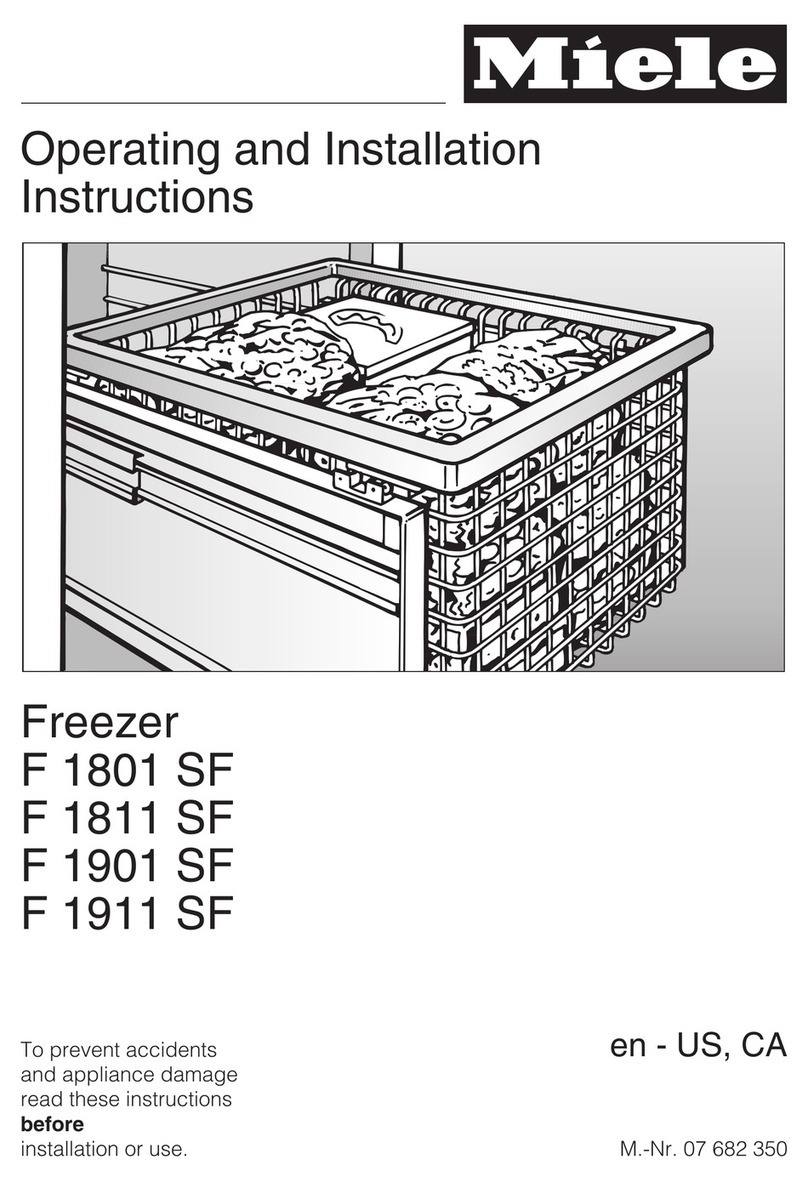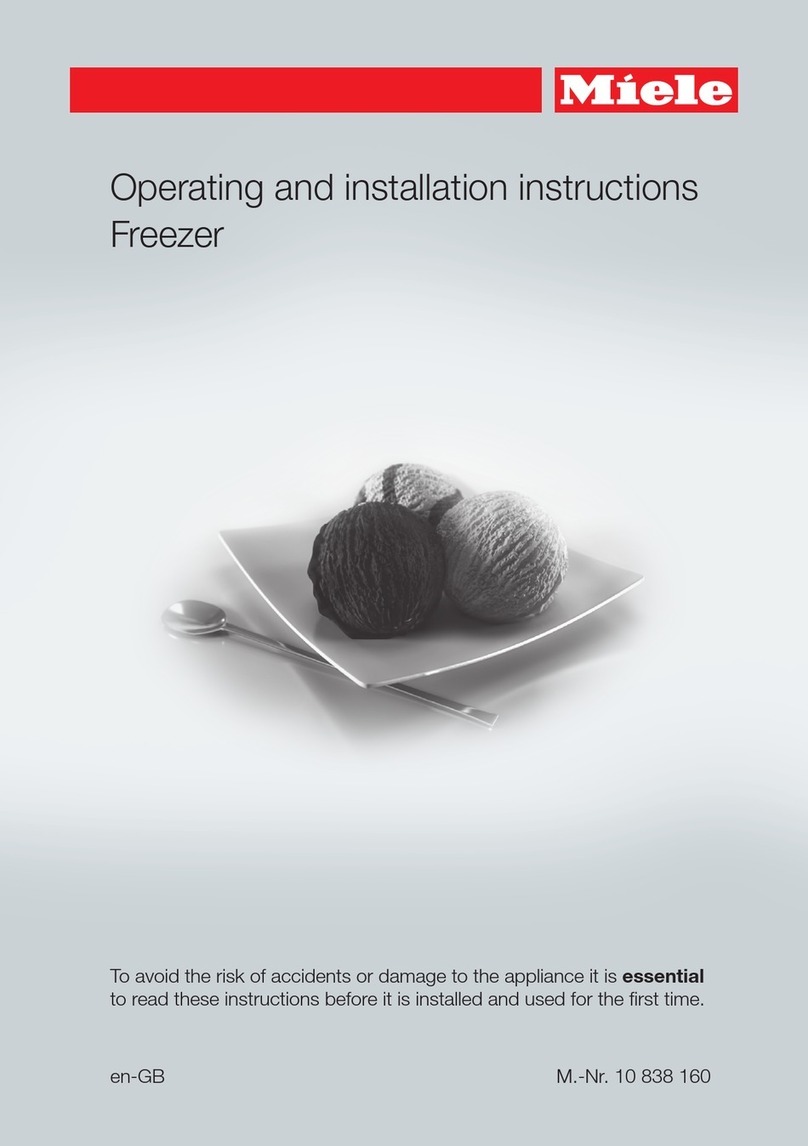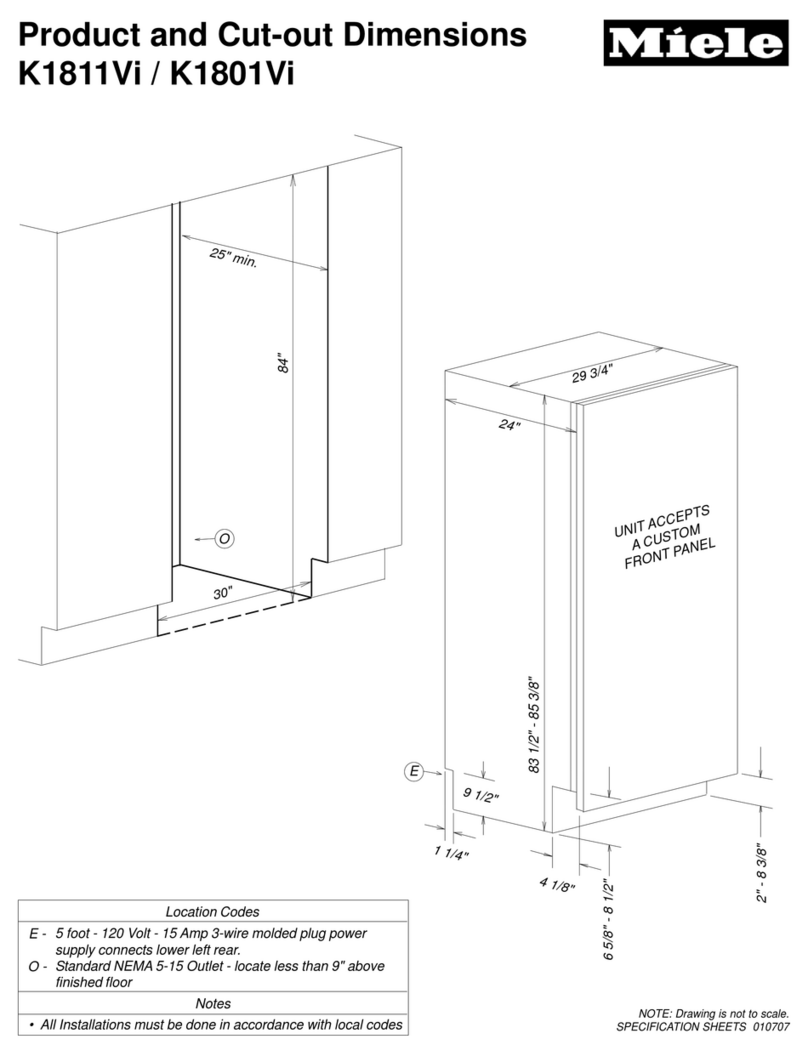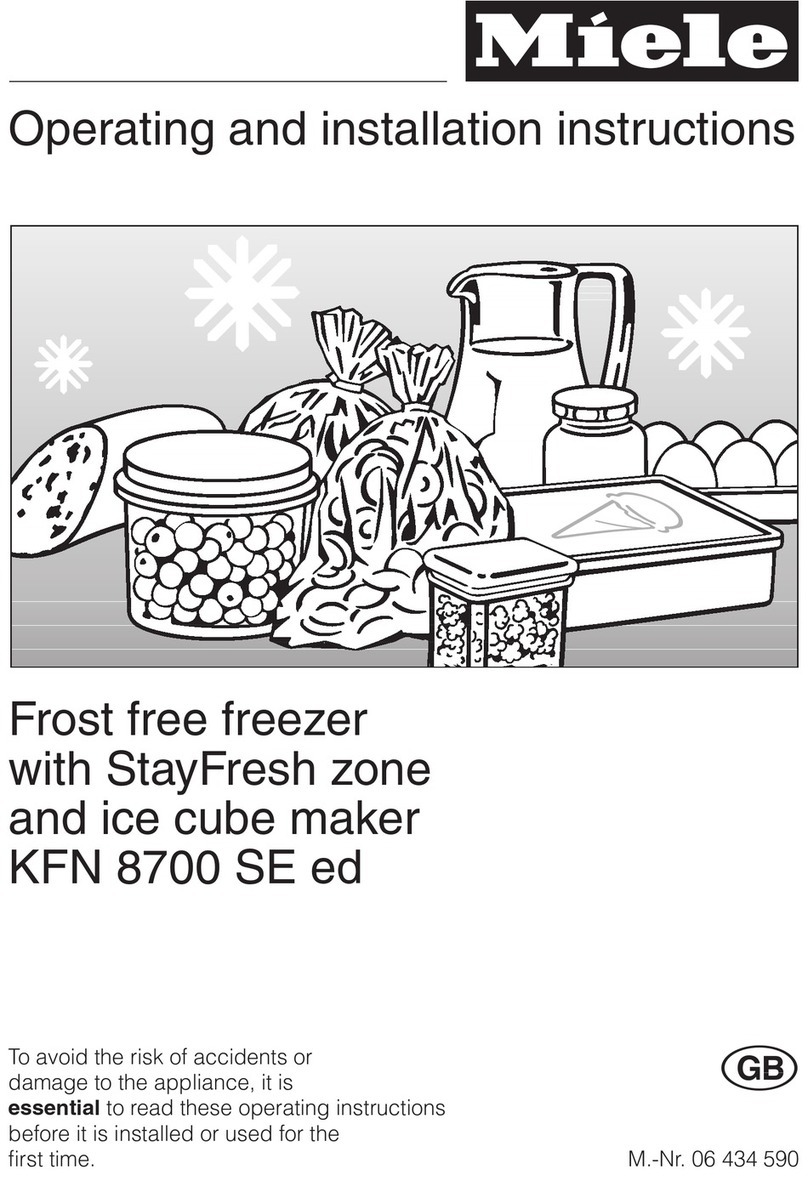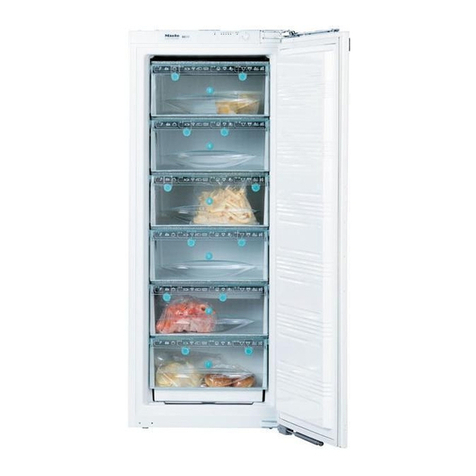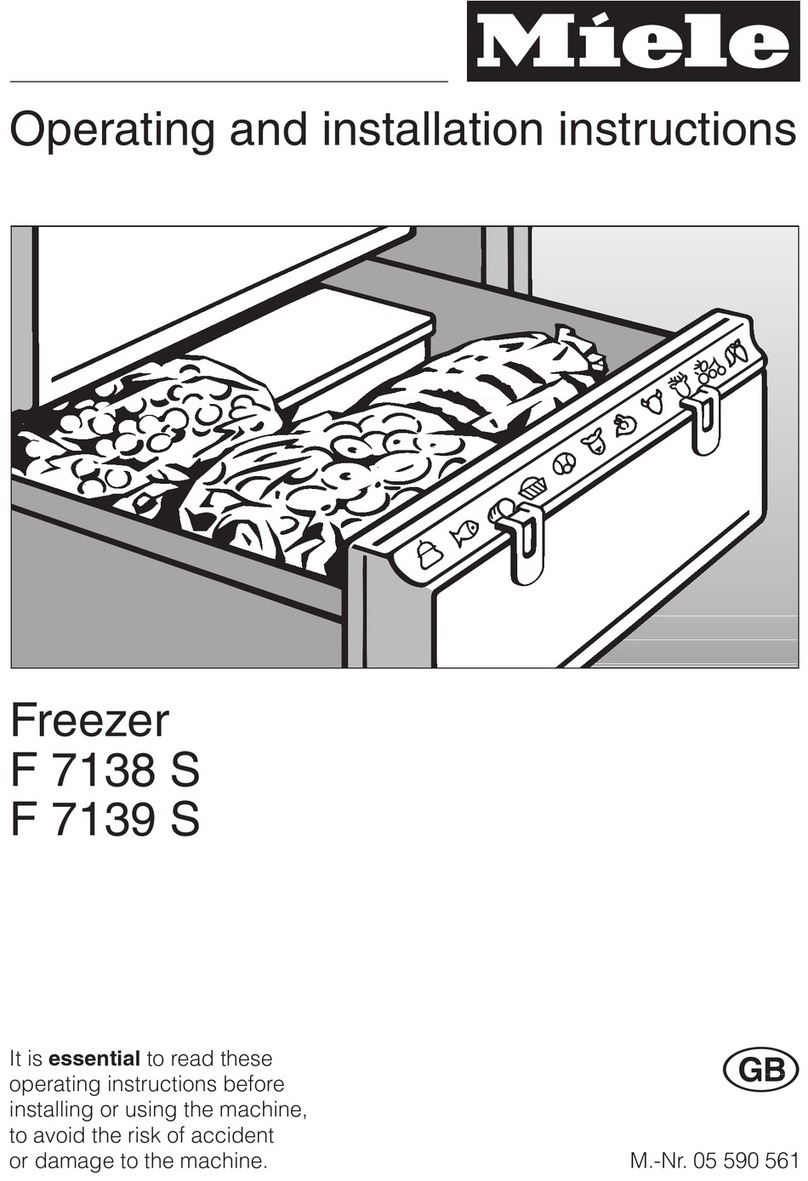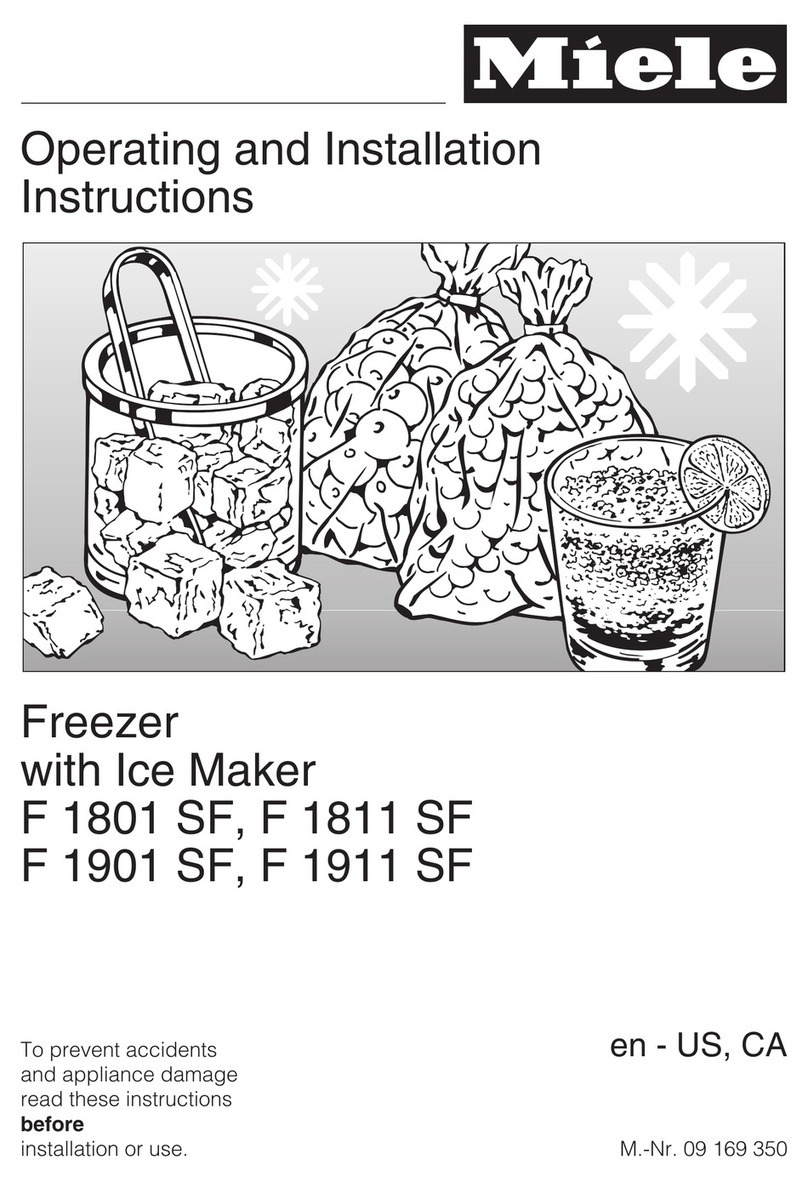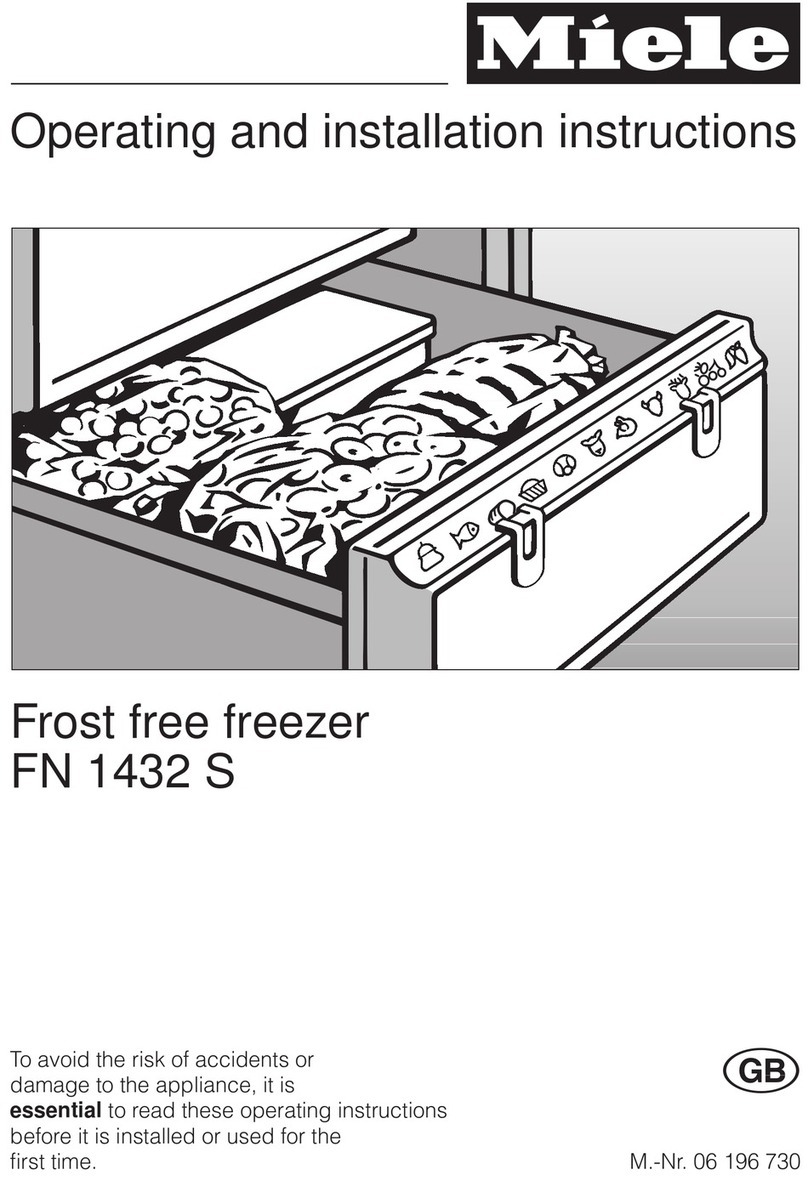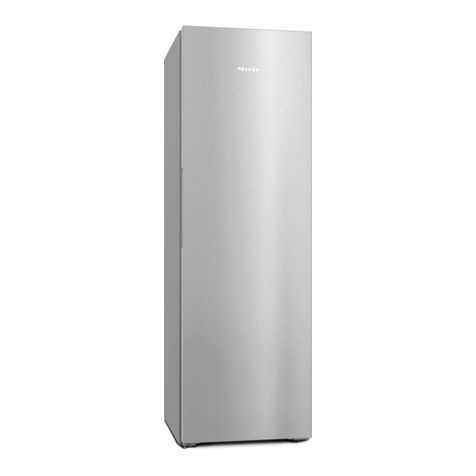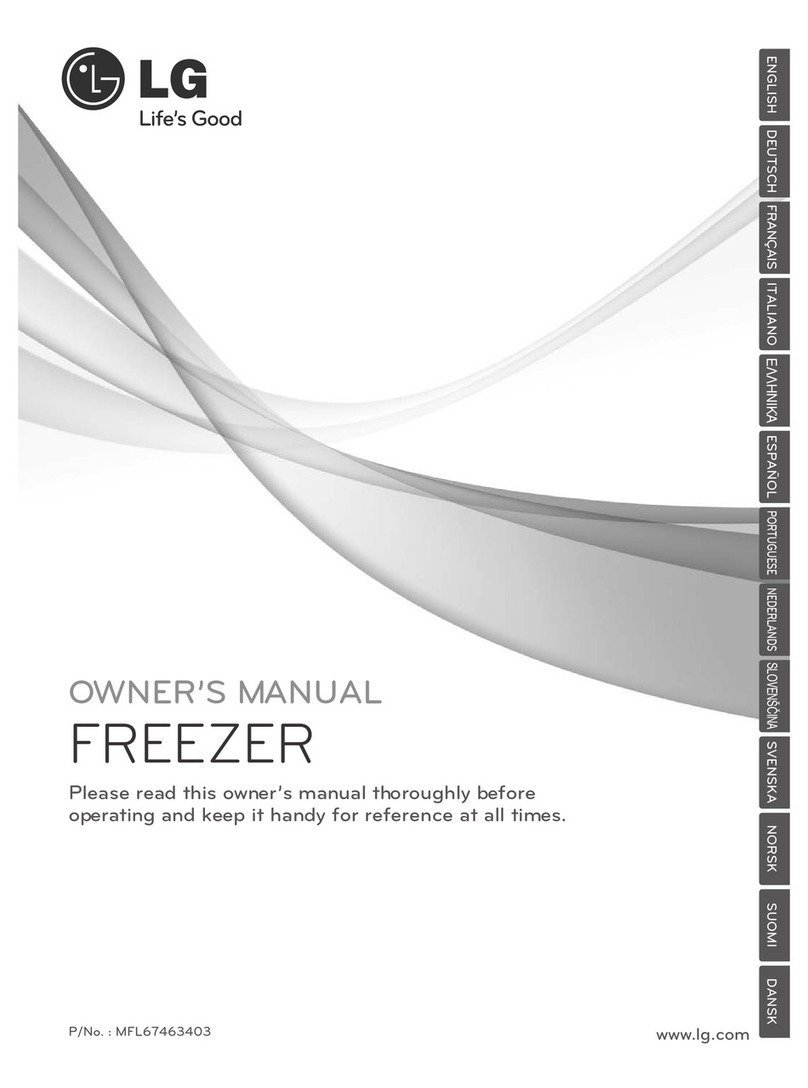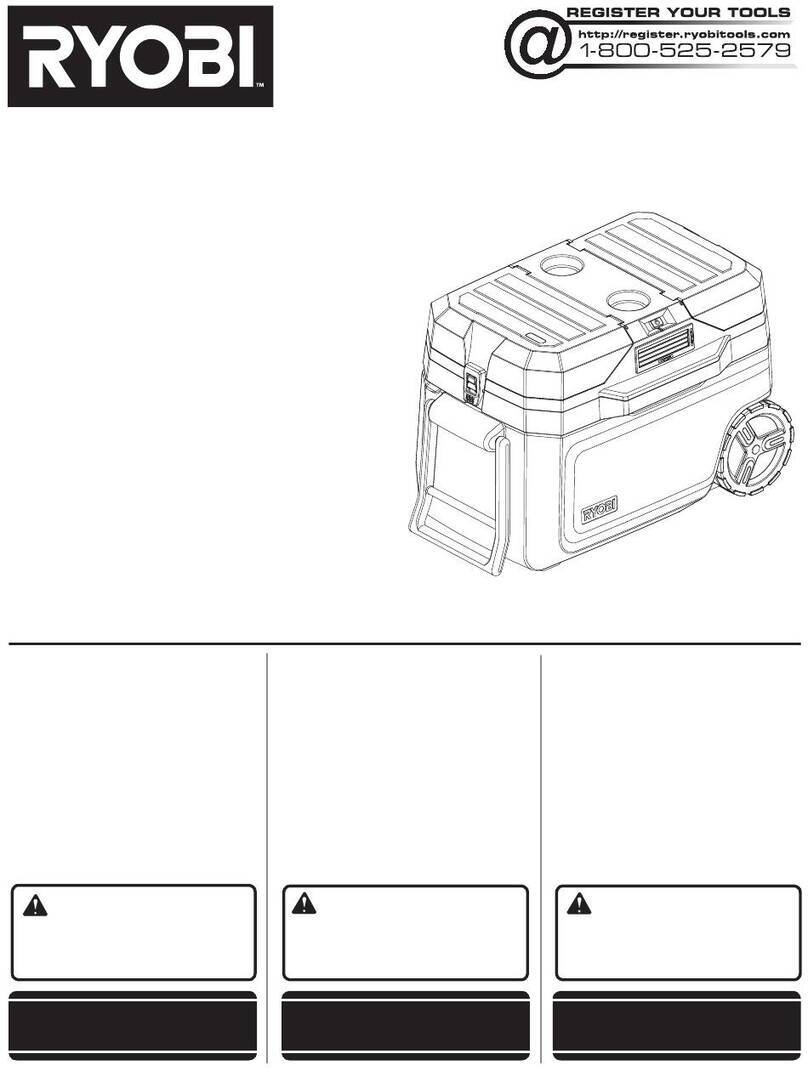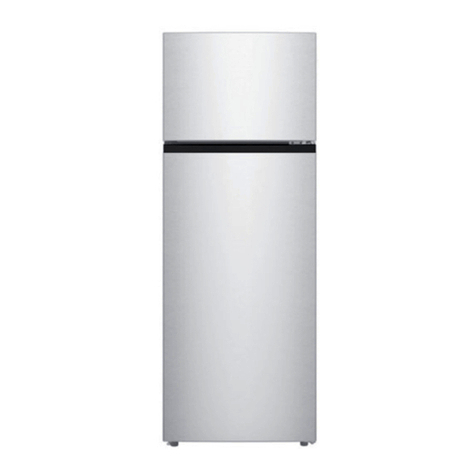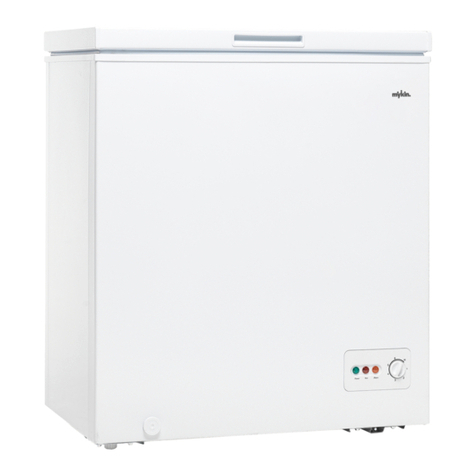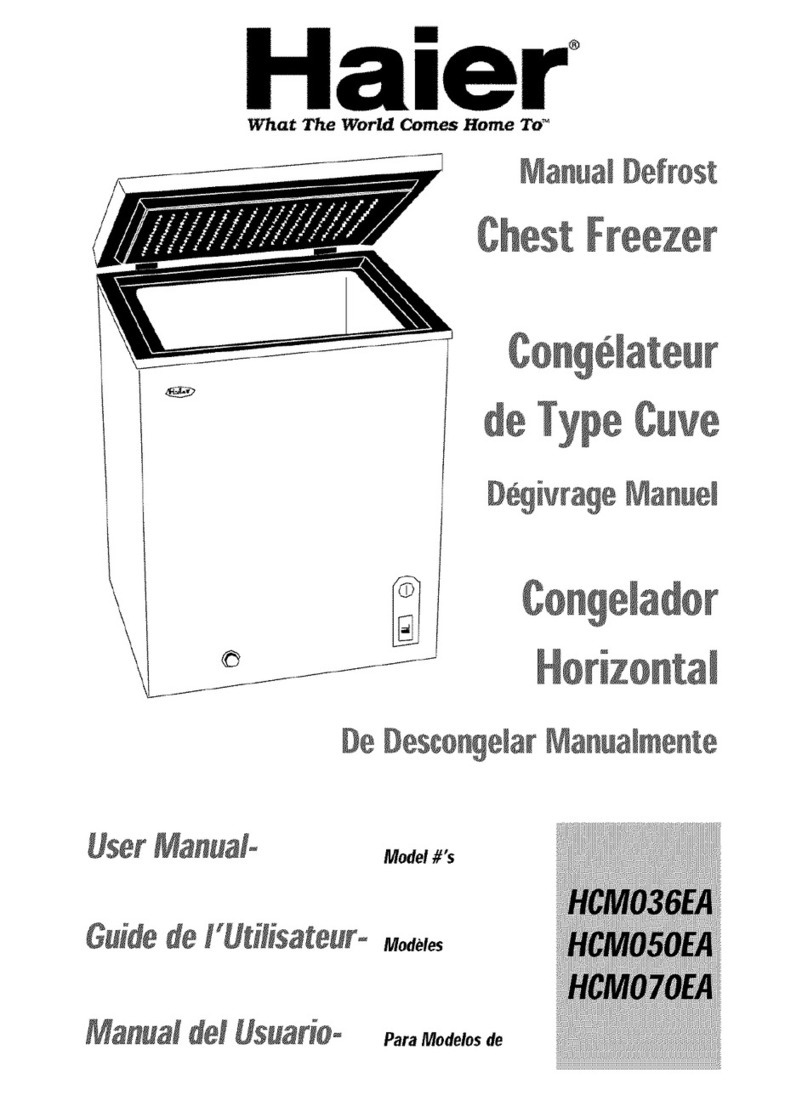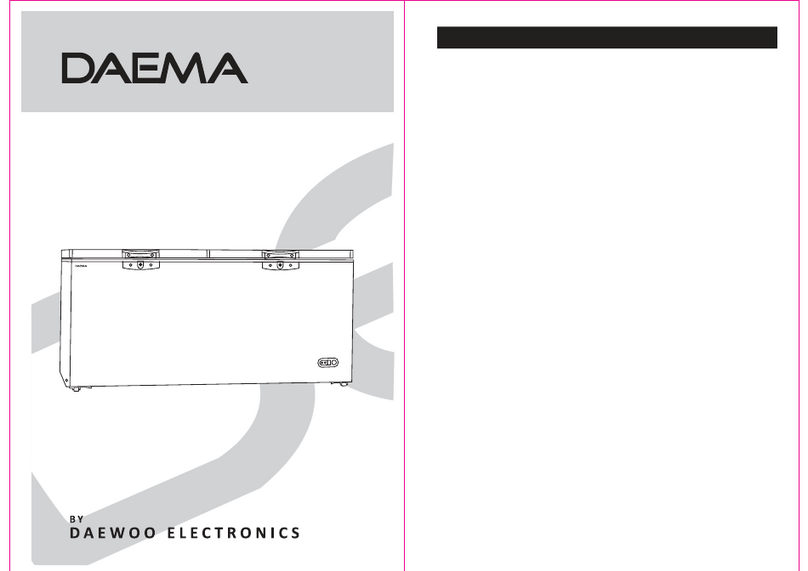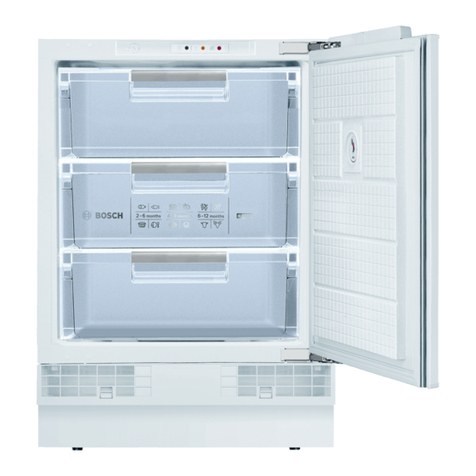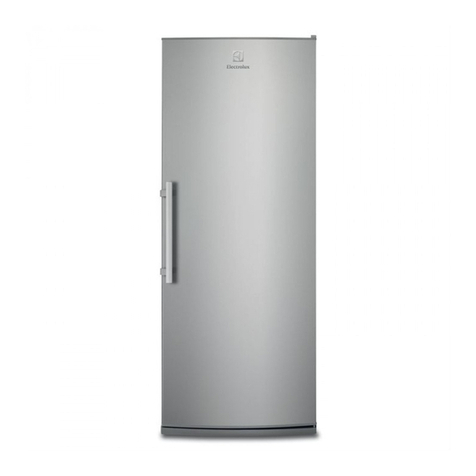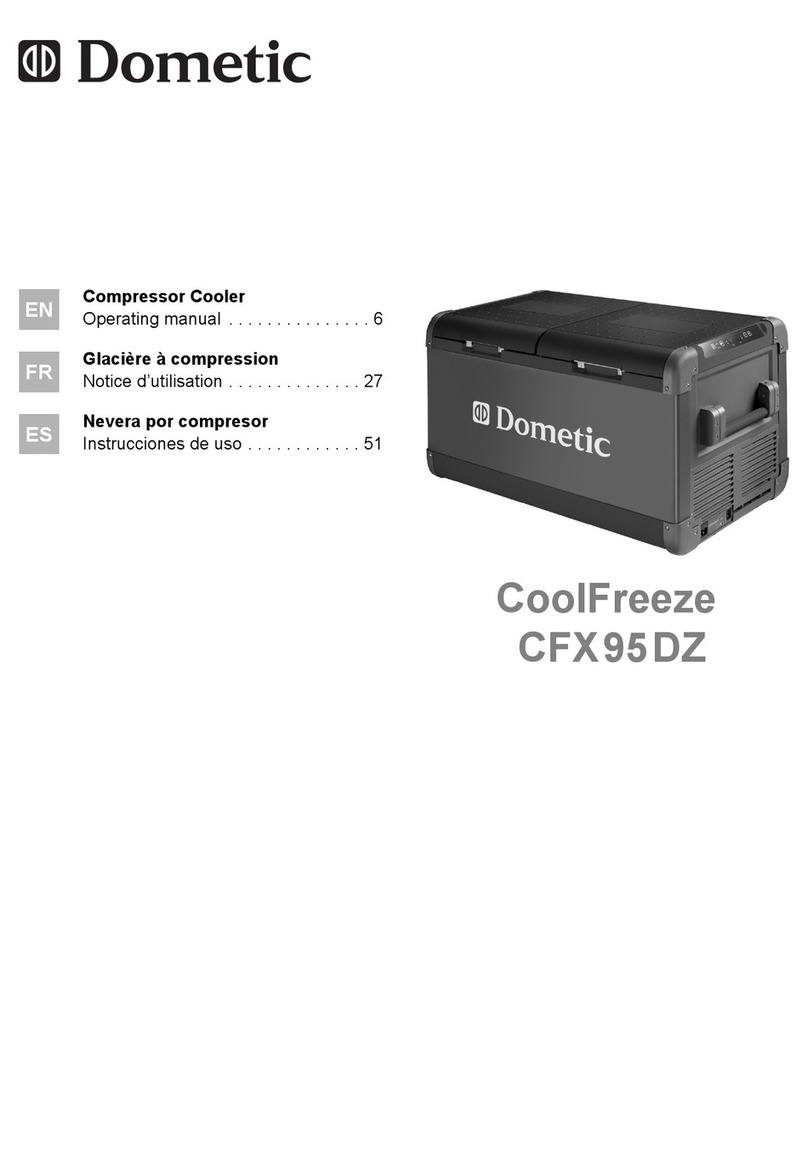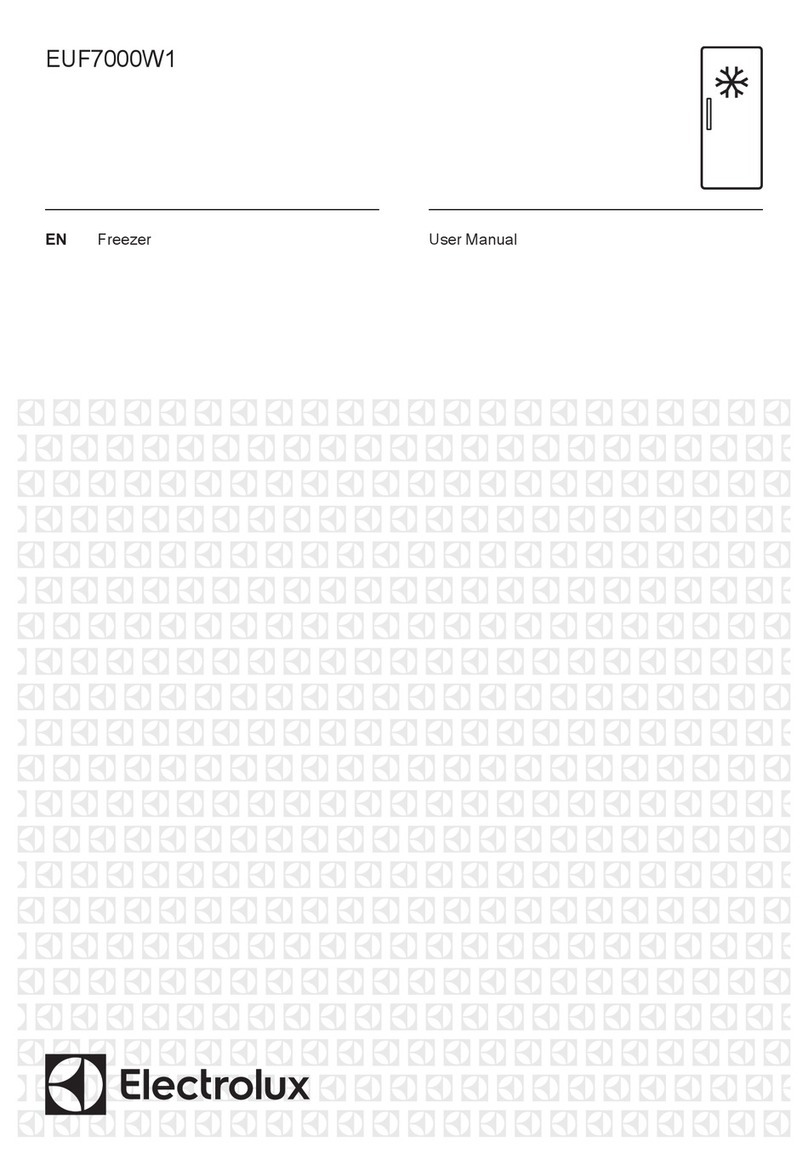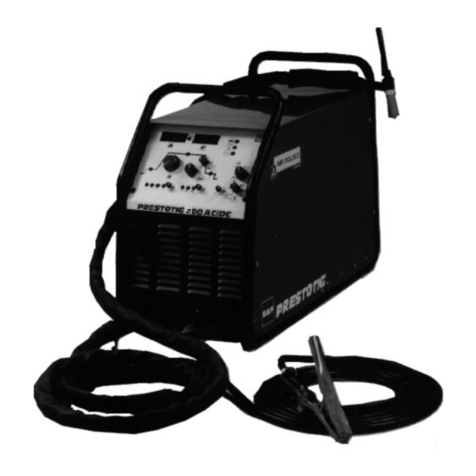This appliance complies with all
relevant legal safety requirements.
Improper use of the appliance can,
however, present a risk of both
personal injury and material
damage.
Before installation and before using
for the first time, read the operating
instructions carefully. They contain
important notes on safety, the
operation and care of the appliance.
This way you will avoid the risk of
accidents and damage to the
appliance.
This appliance is not a toy! To avoid
the risk of injury do not allow
children to play on or near it, or to
play with the controls. Supervise its
use by the elderly or infirm.
Keep these instructions in a safe
place and pass them on to any
future user.
Correct usage
This appliance is intended for
domestic use only. It must only be
used for storing deep frozen food, for
freezing fresh food and for preparing
ice. Any other usage is not supported
by the manufacturer and could be
dangerous. The manufacturer cannot
be held liable for damage caused by
incorrect or improper use of the
appliance.
Technical safety
This appliance contains the coolant
Isobutane (R600a), a natural gas
which is very environment friendly.
Although it is flammable, it does not
damage the ozone layer and does not
increase the green house effect. The
use of this environment friendly coolant
has however led to a slight increase in
the noise level of the appliance. In
addition to the noise of the compressor
you might be able to hear the coolant
flowing around the system. This is
unavoidable, but does not have any
adverse effect on the performance of
the appliance.
Care must be taken during
transportation and setting up of the
appliance that no parts of the cooling
system are damaged. Leaking coolant
can damage the eyes.
In the event of any damage:
– avoid open fires
and anything which creates a spark,
– disconnect from the mains,
– air the room in which the appliance is
located for several minutes and
– contact the Service Department.
for advice.
The more refrigerant there is in an
appliance the larger the room it
should be installed in. In the event of a
leakage, if the appliance is in a small
room, there is the danger of
combustible gases building up.
For every 8 g of coolant at least 1 m3
room space is required. The amount of
coolant in the appliance is stated on the
data plate inside the appliance.
Warning and safety instructions
7


